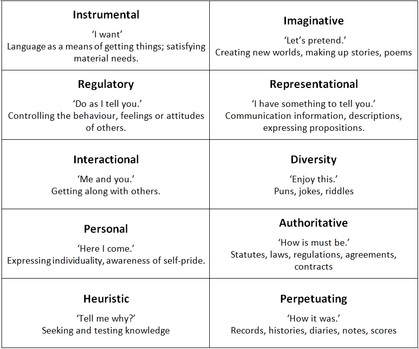Cognitive Biases in Communication
Cognitive biases in communication can lead to misunderstanding and misinterpretation. These biases influence how people perceive and process information during conversations, leading to errors in judgment and decision-making.
Communication can be impacted by biases such as confirmation bias, where individuals seek out information that reinforces their existing beliefs, and anchoring bias, where initial information heavily influences subsequent decisions. These biases can lead to miscommunication, misunderstandings, and ineffective decision-making.
Understanding and recognizing these biases is crucial in improving communication and fostering better understanding among individuals. By acknowledging and addressing these biases, individuals can work towards more effective and mindful communication, ultimately leading to better relationships and outcomes.
Introduction To Cognitive Biases
Cognitive biases greatly impact communication, potentially leading to misunderstandings and misinterpretations. Familiarizing ourselves with these biases can help foster better understanding and more effective communication.
Definition Of Cognitive Biases
Cognitive biases are fundamental quirks in human thinking that can often cause us to interpret information in irrational ways. These biases are the result of mental shortcuts and can sometimes lead to errors in judgment and decision-making. Essentially, cognitive biases are the brain’s way of simplifying complex information and making quick judgments, but they can also distort our perception of reality.
Importance Of Understanding Cognitive Biases
Understanding cognitive biases is crucial, especially in communication, as they can significantly impact how we interpret and convey information. By being aware of these biases, we can become better communicators and make more informed decisions. Here’s why understanding cognitive biases is so important:
- Improved decision-making: Recognizing cognitive biases allows us to critically evaluate information and make better decisions based on facts rather than distorted perceptions.
- Effective communication: By understanding how cognitive biases influence communication, we can adapt our messaging to ensure clarity and avoid misinterpretation.
- Reduced misunderstandings: Being aware of cognitive biases helps us recognize when our own biases are influencing our interpretation of someone else’s words, reducing the likelihood of misunderstandings.
- Enhanced empathy: Cognitive biases can create barriers to understanding others’ perspectives. By understanding these biases, we can practice empathy and bridge the gap in communication.
In conclusion, recognizing and understanding cognitive biases is crucial for effective communication. These biases have the power to shape our thoughts and influence our decision-making processes, often without us even realizing it. By educating ourselves and others about cognitive biases, we can improve our communication skills and create a more inclusive and open dialogue.
Confirmation Bias
Cognitive biases are common pitfalls that affect how people communicate and process information. One of the most well-known biases is the Confirmation Bias, wherein individuals tend to seek out information that confirms their existing beliefs, while ignoring or dismissing evidence to the contrary.
Definition Of Confirmation Bias
Confirmation bias is the tendency to search for, interpret, favor, and recall information in a way that confirms one’s preexisting beliefs or hypotheses. This bias can lead individuals to overlook contradictory information and reinforce their existing opinions, thereby impacting their communication and decision-making.
Examples Of Confirmation Bias
- An individual who believes in the benefits of a particular diet might actively seek out and recall information supporting its efficacy, while ignoring studies that suggest otherwise.
- In a work environment, a manager might discount feedback from their team that contradicts their initial assessment of a project, leading to poor decision-making.
- During political discussions, individuals may selectively engage with news sources that align with their viewpoints, disregarding alternative perspectives.
Anchoring Bias
When it comes to communication, the anchoring bias can significantly impact how information is perceived and processed. Anchoring bias is a cognitive bias that influences individuals to rely too heavily on the first piece of information they receive when making decisions or judgments. This bias can lead to skewed perceptions and misunderstandings in communication, affecting interpersonal relationships, business transactions, and other forms of interaction.
Definition Of Anchoring Bias
Anchoring bias is a cognitive bias that occurs when individuals place excessive emphasis on the initial piece of information they receive, often using it as a reference point for making subsequent judgments or decisions. This bias can lead individuals to disproportionately weigh the first information they encounter, influencing their interpretation and decision-making.
Effects Of Anchoring Bias On Communication
1. Skewed Perception: Anchoring bias can distort individuals’ perception of information and cause them to overemphasize the initial data they receive, leading to misconceptions and misinterpretations.
2. Communication Barriers: The anchoring bias can create communication barriers, as individuals may struggle to consider alternative viewpoints or new information if they are fixed on the initial anchor point.
3. Inaccurate Conclusions: Due to the influences of anchoring bias, communication can lead to inaccurate conclusions, as individuals may fail to objectively assess new data beyond the initial anchor point.
Availability Heuristic
If you’ve ever found yourself making decisions based on easily accessible information rather than a thorough analysis of the facts, you may have fallen prey to the availability heuristic. This cognitive bias, a mental shortcut that our brains often take, can significantly impact the way we communicate with others. In this blog post, we’ll explore the definition of the availability heuristic and delve into its influence on communication.
Definition Of Availability Heuristic
The availability heuristic refers to our tendency to rely on information that is readily available to us when making judgments or decisions. Instead of systematically evaluating all the relevant information, our brains often take a shortcut and place more importance on the information that easily comes to mind.
Influence Of Availability Heuristic On Communication
The availability heuristic can have a significant impact on the way we communicate with others. It can lead to biased judgments, faulty decision-making, and even misconceptions. Here are a few ways in which the availability heuristic affects our communication:
- Biased perception: When we rely on information that is readily available, we may overlook alternative perspectives or fail to consider a broader range of possible explanations. This can result in biased perceptions and lead to misunderstandings in our communication.
- Emotional influence: The availability heuristic often relies on information that evokes strong emotions. This emotional influence can shape our communication, making it more charged or subjective rather than objective. It can also lead to the spread of misinformation as emotionally impactful but less accurate information tends to be more memorable.
- Overgeneralization: Another way the availability heuristic affects communication is through overgeneralization. When we rely on easily accessible information, we may draw broad conclusions or make sweeping generalizations that may not be entirely accurate or representative of the situation at hand.
The availability heuristic has a profound impact on our communication, shaping our perceptions, emotions, and tendencies to generalize. Being aware of this bias can help us make more informed and objective decisions and improve the way we communicate with others.
Halo Effect
Have you ever formed an impression of someone based on a single positive trait, and then assumed that all of their other qualities must also be positive? That, my friend, is the halo effect. It is a cognitive bias where our overall perception of someone influences how we view their specific traits or abilities. In the realm of communication, the halo effect can greatly impact our judgments and interactions with others, often leading to both positive and negative consequences.
Definition Of Halo Effect
The halo effect refers to our tendency to generalize positive or negative impressions of an individual or an entity to other unrelated attributes or qualities they possess. It stems from our innate desire to simplify complex information and make quick judgments, often based on limited information or one standout characteristic.
Impact Of Halo Effect On Communication
In communication, the halo effect can significantly influence our perceptions, interactions, and decisions. Here’s how:
- Overvaluation of Positive Traits: When we develop a positive perception of someone based on one admirable quality, we tend to overvalue their other qualities. This can lead to biased judgments, inflated expectations, and a skewed perception of their overall competence.
- Exclusion of Negative Traits: The halo effect can blind us to an individual’s negative traits or shortcomings. We may overlook critical flaws or weaknesses, assuming that they are equally talented or reliable in all aspects. This can result in poor decision-making and overlooking potential risks or pitfalls.
- Stereotyping: One interesting consequence of the halo effect is the creation and perpetuation of stereotypes. When we attribute positive qualities to a specific group or category based on the exceptional performance of a few individuals, we generalize those positive attributes to all members of that group. This can lead to unfair assumptions, discrimination, and lack of individuality in communication.
- Unbalanced Feedback: People influenced by the halo effect may also provide unbalanced feedback during communication. They may overly praise or emphasize positive aspects while neglecting constructive criticism or addressing negative aspects. This can hinder personal growth and improvement.
- Inaccurate Perceptions: Lastly, the halo effect distorts our overall perception of individuals, influencing how we interpret their intentions, behavior, and communication. We may assume that someone with a positive halo is always well-intentioned and trustworthy, while someone with a negative halo is constantly wrong or untrustworthy. These biased perceptions can hinder effective communication and compromise relationships.
As with any cognitive bias, recognizing the halo effect in our communication is crucial to mitigating its impact. By staying aware of our biases and striving for objective assessments and interactions, we can foster clearer and more meaningful communication, ensuring fairness and understanding for all involved.
Frequently Asked Questions On Cognitive Biases In Communication
What Is Cognitive Bias In Communication?
Cognitive bias in communication refers to the ways our thoughts can distort how we perceive and interpret information. It affects how we understand and respond to messages from others, potentially leading to misunderstandings or miscommunication.
What Is An Example Of Bias In Communication?
An example of bias in communication is using language that favors one group over another. This can happen through stereotypes or exclusion of certain perspectives. For instance, using gender-specific language or assuming a person’s capabilities based on their background.
What Is An Example Of A Cognitive Bias?
An example of a cognitive bias is confirmation bias, where people seek out information that supports their beliefs. This can lead to dismissing opposing viewpoints.
Conclusion
To effectively communicate, it is crucial to recognize and address cognitive biases. By understanding these biases and their impact on conversations, we can avoid misinterpretations and improve overall communication. From confirmation bias to the halo effect, these biases shape our thoughts and perceptions.
Being aware of them enables us to engage in more open-minded and empathetic discussions. By acknowledging and working to mitigate cognitive biases, we can foster healthier and more effective communication in our personal and professional lives.

